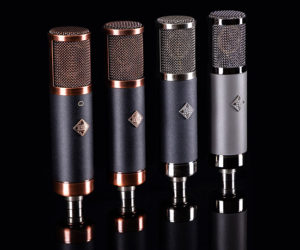EM Acoustics recently revealed the HALO Arena (HALO-A) large-format line array system to the North American pro audio marketplace at the 2018 InfoComm show in Las Vegas. HALO-A follows the same core design as the more compact HALO-C that was introduced in 2012, incorporating the company’s “maximum headroom” philosophy with the goal of consistent performance regardless of sound pressure level (SPL).
Unlike HALO-C, which utilizes a plane-wave drive unit for the high-frequency section, the new HALO-A employs compression drivers due to the need for much higher SPL required in medium- to large-format touring and installed sound reinforcement applications.

Specifically, a proprietary, patent-pending emulation manifold combines the output of four 1.4-inch-exit (3.4-inch diaphragm) compression drivers into a plane-wave array. This assembly provides a significant moving area and is intended to allow transient audio peaks to exceed the nominal level without compromising output or encountering clipping.
The HF section is flanked by a pair of 12-inch (3.5-inch voice coil) neodymium woofers combined with optimally-tuned low turbulence porting and large cabinet volume. It’s intended to deliver low-frequency performance to complement the HF. EM Acoustics intentionally kept HALO-A as a 2-way system to reduce off-axis parallax issues to a single crossover point, an aspect of extensive research and development focus.
Performance Parameters

A single HALO-A enclosure requires two amplifier channels and makes use of modern FIR (finite impulse response) digital processing, so it needs to be deployed with either the company’s DQ20 amplification and control platform or the APA-4E8 amp/controller from XTA Electronics. Using either, up to eight enclosures can be driven from a single amplifier, although six are recommended as a maximum for full output.
A single HALO-A module is stated to exhibit a flat, free-field frequency response from 48 Hz to 19 kHz (+/-3 dB) and a phase response that is +/- 20 degrees between 150 Hz and 18 kHz. Due to the unique loading technique applied to the low-frequency drivers, combined with the high frequency waveguide, the 90-degree horizontal dispersion pattern control is said to be maintained down to 250 Hz.
Modules measure 14.3 x 24.4 x 40.2 inches (HxWxD) and weigh 145.2 pounds.
Enclosures are constructed from multi-laminate Baltic birch plywood that’s rebated, screwed and glued together for maximum strength. Intelligent bracing combined with the low-loss porting structure is designed to minimize panel flexure to remove unwanted resonances while also lowering overall weight. The enclosure is finished in a tough polycoating that provides weather resistance without need for further treatment.
In The Air

The flying hardware has been built to offer flexibility and speed in touring applications. The 3-point system utilizes quick-release pins, and array angles can be pre-set on individual elements while they reside in their transport carts — as an array is lifted into position, the rear links move to their pre-set array angles, with a final pin fixing everything in position.
Key flying hardware components are made with high tensile steel parts that are coated with Xylan, a polymer coating that contains PTFE (Polytetrafluoroethylene) for both lubrication and impact resistance. As a result, the company states that arrays of up to 24 elements can be assembled with above-regulation safety factors.



